REVIEW – The return of Age of Empires after more than 15 years of waiting is a historic event for the video game industry. One of the best-rated strategy series of all time is back, and it does so to satisfy its loyal fans and a new generation of players. Does it succeed? In the review of Age of Empires IV, you will discover that this is an excellent RTS, which perhaps played it too safe.
When Microsoft shut down Ensemble Studios in 2009, many fans mourned the end of a renowned studio and the likely end of the popular real-time strategy series Age of Empires. Microsoft had meanwhile established itself on the console market and celebrated great success with the Xbox 360. For a long time, there was no place for their veteran PC brands. Fortunately, that has changed again in recent years. Microsoft is returning to its roots, which also means a fresh start for some of its PC series.
You had to wait 16 years to return to the Middle Ages
We have seen the release of elaborate remastered versions of the three previous parts of Age of Empires since 2018. Now the time has finally come that fans have been waiting for for over 15 years. With Age of Empires IV, a completely new part of the series appears for the first time since 2005. Relic Entertainment developed the game with over twenty years of experience in real-time strategy through Homeworld, Warhammer 40,000: Dawn of War and Company of Heroes. It remains to be seen whether that will be enough to restore a venerable brand to a new shine.
Had Age of Empires IV been developed regularly as planned under the leadership of Ensemble Studios, we would probably be dealing with battles from the 19th and 20th centuries. Initially, the series’ creators planned to conclude the journey through human history with the fourth part. The developers of Relic did not follow these plans with their new Age of Empires IV. Instead, they have decided to pay another visit to the Middle Ages, which was the focus of the second part.
For this, this epoch of history should be presented as authentically as possible. In every fibre of the game, you can feel how the developers worked together with experts to convey a realistic picture of the Middle Ages. The game is crammed full of small videos and animation that graphically depict the functioning of military equipment and the people’s way of life during this time. It seems to have been the aim of the developers to make Age of Empires IV not only suitable as a video game but also as educational material.
This also applies to the four extensive campaigns. These consist of eight to ten missions each, telling the true story of significant conflicts in the Middle Ages. From the struggle for the English crown by William the Conqueror and his successors to the Hundred Years War between England and France and the conquest campaigns of the golden horde of Mongols to the rise of the tiny village of Moscow to become the political power centre of all Rus peoples. Between the individual missions, small films with a mixture of real locations, animations and scenes recreated by showmen tell the historical background to the upcoming battle. The game succeeds very well in embedding the otherwise loosely connected missions in a historical context.
The developers did not do any favours by placing the English and French campaigns one after the other. On the one hand, this is because in both campaigns, especially in the final phase, there are a lot of missions consisting of sieging a fortress or being besieged in a fortress. On the other hand, the English and the French play very similarly. During the first two campaigns, we initially saw a rather dull picture. But that changed again with the other two campaigns because the game here suddenly expresses its diversity more clearly.
Different populations
Fortunately, the fact that the English and the French play very similarly remains the exception. There are a total of eight different races in Age of Empires IV. That is a lot less than the starting line-up of 13 factions in the original Age2, but the civilizations differ much more significantly than they were back then. There is still a central technology tree in which essential elements are the same for all races. On the other hand, some technologies are only accessible to specific factions, sometimes in different ages. For example, only the Delhi Sultanate could send war elephants into battle. Mounted archers are primarily unknown among Europeans.
In addition to these differences in the technology tree and the respective special units of the peoples, the developers have also come up with unique game mechanics for most of the eight factions. For example, the Mongols build their camp only with yurts that they could pack up at any time and move to another location. The equestrian people from Central Asia are very mobile with their mighty cavalry hordes and economic infrastructure. If an area is looted or too dangerous, the base can be relocated without building everything from scratch. The Mongols pay for this high mobility with a lack of security. They cannot develop palisades or walls. So no people for players who like to hide.
The Rus, on the other hand, are a race of hunters. Instead of the usual mill, they build a hunting lodge. Fields can be created around these, just like the other peoples, but the Rus gain advantages by hunting animals. With every wild animal you hunt, a value increases that unlock bonuses for the work speed of workers and a passive gold yield in three stages, which is earned in the hunting lodges. The Rus flourish particularly well when a lot of forest surrounds them. This is also reflected in their architecture. Until the third age, buildings were made entirely of wood. The Rus unlocked stone walls as late as any other people.
The Chinese with their dynasties and tax collectors, the Delhi Sultanate with its literary culture and free research, and the Abbasids with their House of Wisdom also offer exciting, unique mechanisms. As a result, the focus of many of the eight factions is at a different point, which ensures variety in the game. In this regard, the concept of the races has been further developed in a meaningful way compared to Age of Empires 2. The lower number can also be forgiven since they also want to be well balanced against each other. As far as we can see, the developers did a pretty good job.
The usual gameplay
As praiseworthy as the differences among the peoples are, they are sorely needed in the game’s overall concept. The rest of the gameplay is based noticeably on the template from Age of Empires 2 and plays it safe as far as possible. Veterans should recognize the gameplay from the first second and feel comfortable. Don’t change too much so that no one gets the idea of not identifying the game as Age of Empires. There is no room for unknown and possibly experimental aspects.
As usual, the economy consists of the four raw materials wood, food, gold and stone, which are mined by the villagers as usual. To do this, we are building logging camps, quarries and mills in the vicinity of the deposits to shorten the workers’ journeys. In addition, we are building army buildings such as barracks, shooting ranges and stables in our settlement, where we raise our troops. We use residential buildings to increase our population limit, and in special constructions such as blacksmiths and universities, we research particularly powerful technologies for our army and buildings.
However, the developers at least dared to venture into the next age. This no longer takes place simply through research in the village center. To advance to the next level, we have to erect one of two different so-called landmarks. These differ depending on the age and people. For example, we are building the Kremlin with the Rus, which serves as a fortress. Often the landmarks are stronger versions of other buildings such as forges, keep or monastery.
There are also slight differences in the walls, which soldiers can now man. They also represent a much more massive obstacle, as siege engines can only bring down the stone bulwarks. Towers can also be built into the walls, but ranged fighters cannot handle them for some inexplicable reason. What is supposed to serve as a powerful defence somehow seems like the weakest link in the fortress.
In general, however, these minor deviations cannot detract from how much Age of Empires IV plays like Age of Empires 2 in the end. This may sound like a good starting point given the greatness of Age 2, but Age 4 cannot keep up with the original’s gameplay. We became aware of this in many small details. For example, not even some of the convenience functions established with the Definitive Edition made it into the game. We looked in vain for a global production display or a button to automatically send our scout on an exploration tour.
It even lacks functions that were already available in the original. There is no longer a central button in the village centre to trigger an alarm and thus instruct all workers to seek shelter in buildings. There is a corresponding button in the villagers’ menu, but that turns out to be somewhat cumbersome since not all workers are always within reach. So dying villagers were the order of the day for us. The entire diplomacy area is also no longer available. We can still pay tribute in the form of raw materials, but changing our diplomatic status (hostile, neutral, allied) is no longer possible. So the teams stay the same as they were set up at the beginning of the game.
Rock-paper-scissors
So, in the end, as is so often the case, arms have to speak. A rock-scissors-paper principle that is relatively easy to understand is used. We use spearmen to hold up enemy cavalry, and our riders make short work of unprotected ranged fighters, and these in turn fire at slow infantry. The number of different units is also minimal. In principle, the backbone of every army consists of spearmen and swordsmen, bow, crossbow and handpipe archer, and spear riders and knights. In addition, depending on the people, specific units either replace one of these basic units or are added to the arsenal.
The Holy Roman Empire, for example, can train a third infantry unit. The French send the so-called arbalétrier instead of the crossbowman and the royal knight instead of the knights. Most units can increase with Age can still be upgraded to veteran and elite versions of themselves. There is, therefore, no further development into other unit forms, wherein Age of Empires 2, for example, a knight developed into a chevalier and finally into a paladin. That’s a shame, but it doesn’t reduce the fun that medieval battles are. The advantages and disadvantages of the units and also the terrain can be used tactically. Rangers benefit from heights, and recently forests can be used as privacy screens. For example, ambushes can be set up that deserve the name.
When it comes to buildings and fortifications, of course, siege engines also come into play. What is new here is that some units can build rams and siege towers directly at the front. The troops can then be transported into this and safely driven to the fortress. Gates are torn down with the ram, and the siege tower unloads its fighters on the wall battlements to face the defenders there. If the attack on a fortress is more destructive, heavy equipment from the weapons workshop must be used. With trebuchets and cannons, even the thickest walls are quickly a pile of rubble.
Visually unattractive
The destruction of the building is usually shown very effectively and provides a certain satisfaction for us as attackers. The buildings are generally still one of the positive elements of the visual presentation of Age of Empires IV. The developers at Relic Entertainment use the latest version of the in-house Essence Engine for the presentation. However, the graphics are not really up to date. Away from the buildings are sometimes noticeable with faded ground textures, the foliage of trees looks somehow artificial. The representation of water has also been seen much better nowadays. In addition, the models of the units all appear very roughly polygonal, which is particularly noticeable at a close zoom level.
Speaking of zoom: The difference between the very close and the furthest zoomed out is relatively small. Even at the highest zoom level, the overview leaves a lot to be desired — no comparison with the extremely high zoom factor of the AoE2 Definitive Edition. Now, of course, you can’t compare that since the 2D graphics naturally require less computing power. But if you decide to use 3D graphics, you as a developer also have to make sure that it meets the demands of the game. At no point did we feel that Age of Empires IV manages to create the same atmosphere with its visual presentation as the glossy optics of the Definitive Edition of Age of Empires 2 can do.
Ready for battle
To compare the game’s content with the other parts of the series would, of course, not be entirely fair. Age of Empires 2, in particular, has received tons of new content over the years in the form of new campaigns, races and game modes. Of course, Age of Empires IV can’t keep up with that. However, with the four extensive campaigns, a good 30-40 hours of gaming fun is already provided. In addition, there is the battle mode for other games against the AI. In this mode, various parameters can be set to create a game according to your wishes. Sixteen different map types provide a rough layout of the battlefield. The actual map structure is then generated randomly.
You can play with up to seven computer opponents in addition to the player. The classic conquest, the building of a wonder of the world and the taking of all holy places, can be set as victory conditions. For the AI players, four levels of challenge can be set from easy to very difficult. However, there seems to be a bug or simply a lack of balance here. The simple level of difficulty is described by the fact that the opponent only launches weak attacks. But it happened to us several times that the AI enemy was standing in front of our base with a large army after ten minutes, despite the simple level. The unprepared beginner should certainly not like that. Fortunately, it’s the only really major mistake we’ve encountered in the entire game.
In addition, there is still the possibility of competing with human opponents in multiplayer mode if you don’t want to mess with the AI. Here the game composition works similarly to the single-player battle. The game is played in either 1v1, 2v2, 3v3 or 4v4 mode. Alternatively, games can also be played in co-op against AI opponents. After the game is released, there will also be a ranking mode where the best will compete against each other. Unfortunately, we have not yet seen how the mode works, as the corresponding menu item is currently not yet functional.
On the other hand, we could look at the multiplayer games of other players. The game has a very convenient spectator function, in which we can hook up to running games. We then either watch the matches live or watch the recording from the start of the game. We have complete control over the camera, the playback speed and see the resource status of all players – an excellent way to watch friends or experienced players and maybe learn one or the other tactic.
A future full of mods
If all of this is not enough for you, you will have to wait until there is new content. The map editor, which was obligatory in all predecessors, does not yet exist in Age of Empires IV. According to current plans, this should be delivered in spring 2022. In the main menu of the game, there is also a sub-item for mods. In the future, you will probably be able to look forward to more player-created content than just maps you created yourself. Of course, that depends entirely on what the officially published mod tools and the map editor offers. With exciting new game modes from the modding community, the game would undoubtedly have the chance to break away from the legacy of its predecessors.
Age of Empires IV is definitely not a bad real-time strategy game. Given the ongoing drought in the genre, the game is undoubtedly one of the best things that could happen to fans right now. Nevertheless, we would have liked more courage from the developers. The game resembles the big Age of Empires 2 too much in the end. It is too much on the safe side not to go wrong. And all of this without actually ever achieving the same atmosphere or the same charm. In any case, it’s hard to come up with reasons why a player who is still enjoying the Definitive Edition of Age of Empires 2 to this day should switch to Age 4. Anyone who nevertheless feels addressed by the more minor innovations such as the fortress walls, the landmarks or the playful differences between the peoples.
-BadSector-
Pro:
+ Cool new features
+ Not bad for teaching history
+ Four varied campaigns
Cons:
– Clunky, mediocre graphics
– AI imbalance
– No map editor and no leaderboards at startup
Publisher: Xbox Game Studios
Developer: Relic Entertainment
Style: RTS
Release date: 28 October 2021.
Age of Empires IV
Gameplay - 8.4
Graphics - 7.4
Campaing Story - 8.2
Music/audio - 8.1
Ambiance - 7.8
8
EXCELLENT
Age of Empires IV is definitely not a bad real-time strategy game. Given the ongoing drought in the genre, the game is undoubtedly one of the best things that could happen to fans right now. Nevertheless, we would have liked more courage from the developers. The game resembles the big Age of Empires 2 too much in the end. It is too much on the safe side not to go wrong. And all of this without actually ever achieving the same atmosphere or the same charm. In any case, it's hard to come up with reasons why a player who is still enjoying the Definitive Edition of Age of Empires 2 to this day should switch to Age 4. Anyone who nevertheless feels addressed by the more minor innovations such as the fortress walls, the landmarks or the playful differences between the peoples.

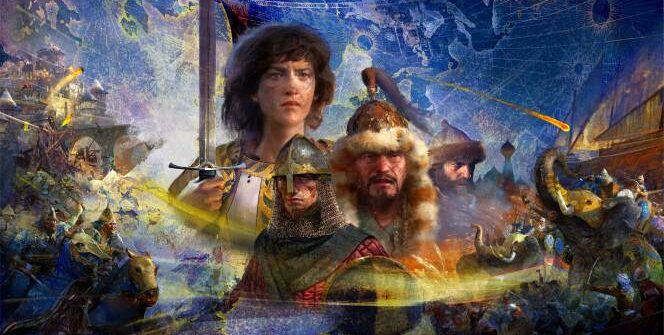

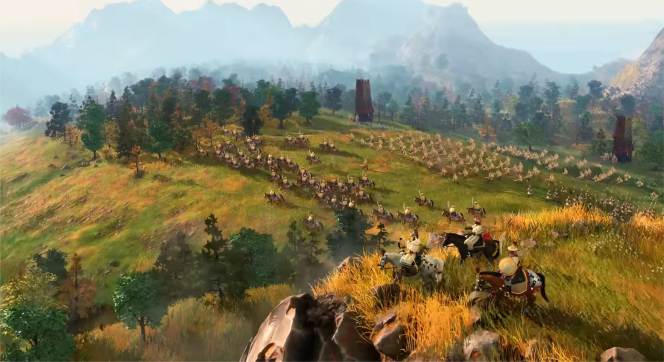


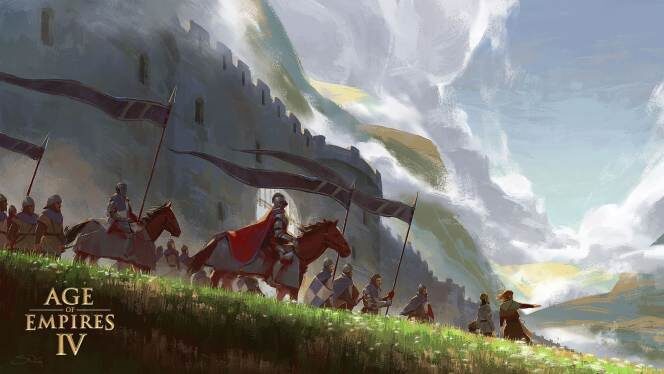
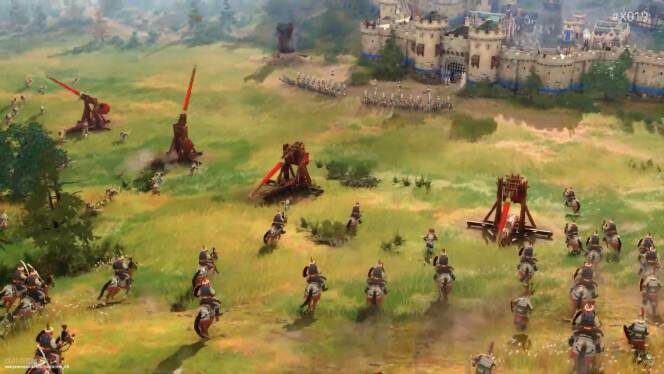
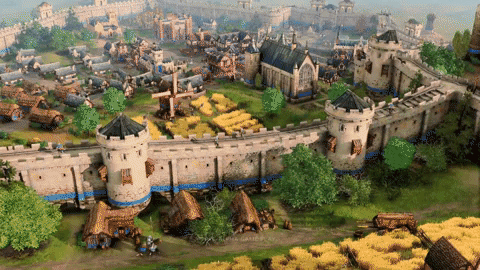




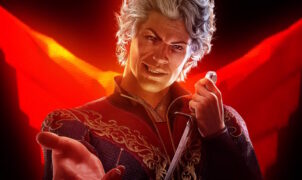









Leave a Reply